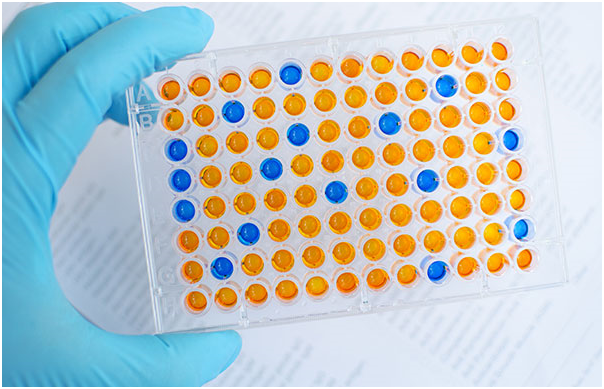ELISA stands for “Enzyme-Linked Immunosorbent Assay.” It is a commonly used laboratory technique for detecting and measuring antibodies, proteins, peptides, and hormones in biological samples. ELISA is a sensitive and specific assay that has a wide range of applications in medical research, diagnostics, and drug discovery.
History of ELISA
ELISA was first developed in the 1970s by Swedish biochemist, Peter Perlmann, and his colleague Eva Engvall. They initially used the technique for detecting the presence of antibodies in patients with autoimmune diseases, such as systemic lupus erythematosus.
Working Principle of ELISA
ELISA is a type of immunologic assay that uses antibodies and enzymes to detect and measure the presence of a specific antigen or antibody in a sample. The basic steps involved in an ELISA are:
- Coat the antigen or antibody of interest onto a solid surface, such as a microplate.
- Add the sample containing the antigen or antibody to the coated surface and incubate to allow binding.
- Wash away any unbound molecules to remove any background noise.
- Add an enzyme-linked secondary antibody that binds specifically to the primary antibody or antigen.
- Wash away any unbound secondary antibody.
- Add a substrate for the enzyme to catalyze a reaction that produces a detectable signal.
- Measure the intensity of the signal to determine the quantity of the antigen or antibody in the sample.
Types of ELISA
There are several types of ELISA, including direct, indirect, sandwich, and competitive ELISA. The choice of ELISA type depends on the type of molecule to be detected and the available antibodies.
Applications of ELISA
ELISA has a wide range of applications in medical research, diagnostics, and drug discovery. Some of the common uses of ELISA are:
- Diagnosis of infectious diseases, such as HIV, hepatitis, and Lyme disease.
- Measurement of hormone levels in blood or urine samples.
- Detection of food allergens in food products.
- Detection of drug abuse in urine samples.
- Screening of potential drug candidates in drug discovery.
Conclusion
In conclusion, ELISA is a versatile laboratory technique that is widely used in medical research, diagnostics, and drug discovery. Its sensitivity, specificity, and ease of use make it an attractive choice for detecting and measuring a wide range of molecules in biological samples.



0 Comments